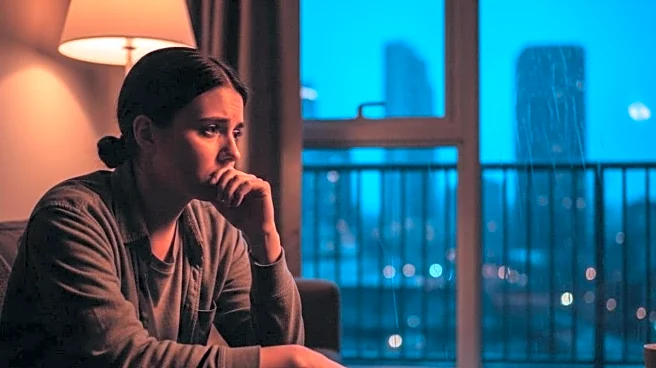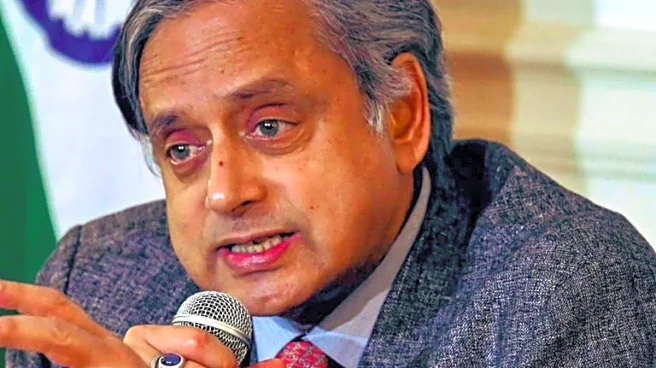It often begins quietly not with a crisis, but with an ache that refuses to fade. You still get up, still show up, still smile when needed. Yet something inside you feels hollow, as if the world has lost
a layer of colour. For many, that’s where the confusion begins: is this simply sadness, or something deeper that we can express?
In India, an estimated 13.7% of adults will experience a mental disorder at some point in their lives, says the Ministry of Health and Family Welfare 2025 report on Mental Healthcare. Around 10.6 % of adults require active intervention for mental health issues. Yet the difference between everyday sadness and clinical depression remains unclear for many. With a treatment gap estimated at between 70% and 92% for those who need help, the issue goes beyond statistics.
Across cities and screens, an entire generation is trying to decode its emotions in real time. The vocabulary of mental health has expanded, but the ability to express what one actually feels has not kept pace. What this really means is that the line between depression and everyday sadness is blurring, not because the symptoms look the same, but because our emotional resilience has changed. We are living in a time where exhaustion passes for normal, silence passes for strength and burnout is rewarded. The question, then, is not just how to tell the difference but whether we even feel safe enough to ask.
What Is The Difference Between Sadness and Depression?
Sadness is a natural emotion, it hits when life disappoints, when you lose something meaningful or when you disappoint yourself. It typically follows a cause, has a beginning and an end, and allows you to still function, albeit with some difficulty. Depression by contrast is more than a prolonged dip in mood.
The current Diagnostic and Statistical Manual of Mental Disorders (DSM-5) states that for a diagnosis of major depressive disorder (MDD), an individual must experience either persistent sadness or a loss of interest in activities for most of the day, nearly every day, for at least two weeks plus at least four other symptoms such as appetite change, sleep disturbance, fatigue, guilt, difficulty concentrating or suicidal thoughts. In India, studies suggest that nearly half of all adults with depression remain undiagnosed and untreated.
In short, if your mood is low but you can still muster joy and your functioning is mostly intact, you may be experiencing sadness. But if your sense of self-worth, your ability to engage with life, your appetite, or your sleep have all crumbled, you may be facing depression.
Is Depression Becoming More Common Among Younger Generations?
The generation now entering adulthood in India faces pressures unlike any before: academic achievement, early career instability, social media comparisons and increasing isolation. For school-going adolescents, a 2025 NIH study found a prevalence of depressive symptoms of 25.9%.
At the same time, infrastructure remains inadequate, according to India Mental Health Market (2025), India currently has fewer than 0.75 psychiatrists per 100,000 people, markedly below World Health Organization standards.
Within this context, what might once have been dismissed as teenage “melancholy” is now a symptom of a deeper emotional crisis. The result is a generation ill-equipped to distinguish between sadness and depression, and often unwilling or unable to seek help.
What Are The Signs And Symptoms of Depression?
Depression tends to manifest as a cluster of symptoms that interfere with everyday tasks. You might find yourself unable to get out of bed, unable to summon interest in friends or hobbies, or overwhelmed by fatigue. Appetite might swing widely; sleep may become elusive or excessive. You might experience an inability to concentrate, feelings of guilt or worthlessness, and in the most severe cases, recurring thoughts of death or suicide.
During a depressive episode, a person experiences a persistently low mood feeling sad, irritable, or emotionally empty. They often lose interest or pleasure in activities they once enjoyed.
Unlike ordinary mood swings, a depressive episode lasts for most of the day, nearly every day, for at least two weeks. Other symptoms may include:
- Difficulty concentrating
- Feelings of guilt, worthlessness, or self-blame
- Hopelessness about the future
- Thoughts of death or suicide
- Disturbed sleep patterns
- Noticeable changes in appetite or weight
- Constant fatigue or lack of energy
Depression can interfere with every aspect of life from relationships and work to studies and participation in community life.
What To Know When It Is Not Depression
Not every low mood constitutes clinical depression. There are lesser-known conditions like persistent depressive disorder (PDD), wherein symptoms are milder but chronic, enduring for two or more years. Adjustment disorder with depressed mood arises after a clear stressful event and tends to resolve once the event is managed.
Additionally, physical conditions (such as thyroid disorders, anaemia, Parkinson’s disease) and medications (e.g., for high blood pressure or acne) can mimic depression. A study from the University of Illinois found that over one-third of US adults use medications that may produce depressive-like side-effects—an insight relevant to India’s increasing poly-medication use.
What Treatment Options Are Available For Depression?
Treatment for depressive disorders depends on the type, severity, and duration of symptoms, as well as individual circumstances. In most cases, an effective plan combines psychological therapies, lifestyle interventions, and, when necessary, medication. International research and Indian studies concur that combined treatment tends to offer the best outcomes.
A 2018 Lancet meta-analysis of more than 116,000 adults found that antidepressants are indeed more effective than placebo, although the benefits were modest and most effective when combined with psychotherapy.
Psychological therapies such as cognitive behavioural therapy (CBT), interpersonal therapy (IPT), and mindfulness-based approaches help individuals identify negative thought patterns, develop coping skills, and rebuild daily functioning.
Medication, including antidepressants, is often prescribed for moderate to severe depression under medical supervision, and works best when complemented by therapy.
In cases of severe depression or suicidal ideation, hospital-based care or advanced interventions such as electroconvulsive therapy (ECT) or transcranial magnetic stimulation (TMS) may be considered.
What this really means is that no single treatment works for everyone; recovery often requires patience, continuity of care, and a supportive environment. Early recognition and timely help remain the most effective ways to manage depression and improve quality of life.
In India, however, the treatment gap remains vast, many regions still lack mental-health professionals and accessible care. Technology and digital platforms are emerging to fill this void; some apps and helplines are under trial, especially among younger users.
For mild to moderate depression, psychotherapy often constitutes the first recommendation; for more severe cases, medication may be introduced concurrently.
Lifestyle changes can play a vital role in recovery and prevention of relapse. Lifestyle changes that support recovery:
- Regular exercise
- A nutrient-rich diet
- Social connection
Evidence shows that resistance training significantly reduces depressive symptoms and that a Mediterranean-style diet produced rapid reductions in depression scores in young adults within weeks.
How Does Loneliness Play Into Depression For Today’s Generation?
One of the most potent yet overlooked contributors to depression is loneliness. Even in bustling cities and networks of friends online, many experience emotional isolation. Younger people often struggle to express vulnerability, fearing it may appear weak. Yet research shows that social connection is a clear protective factor against depression.
In India, the treatment gap means that many live with untreated symptoms for years. The silent epidemic of loneliness feeds into that gap because when you cannot name the confusion, you cannot seek help. Recognising loneliness as a serious mental-health factor is a first step toward bridging the silence.
Steps You Can Take If You Suspect Signs of Depression
Begin with an honest check-in- Are you feeling persistently low, as if the joy has quietly drained from things that once felt easy? Have your sleep patterns changed, your appetite shifted, or your body felt weighed down by fatigue you cannot quite explain? Have you started saying no to plans, isolating yourself without meaning to?
If several of these feel familiar and they have lasted for more than a couple of weeks enough to disrupt your rhythm or focus, it may be time to consider seeing a qualified healthcare professional.
The next step is not about being brave, but being practical. While reaching out to someone you trust, like your general physician or to a mental health helpline, ask for a proper assessment. Majority of of the mental disorders responds best to early intervention, and seeking help sooner often means a quick and easy recovery.
Recognising that you need support is not a weakness. It is the first quiet act of strength that opens the way to healing. In India, stigma remains powerful so there is a chance that you may feel isolated in your experience. Remember, you are not alone and treatment is available.
Disclaimer: The content of this article is intended for informational and educational purposes only. It is not a substitute for professional medical, psychological, or legal advice. Readers are advised to consult a qualified professional before making decisions related to their health, mental well-being, or personal circumstances. If you or anyone you know is feeling overwhelmed, distressed, or unsafe at any point, reach out to the helplines below immediately:
- National Suicide Prevention Helpline: 1800-599-0019
- Vandrevala Foundation Helpline: 1860-266-2345 / 9999 666 555
- Snehi Helpline: +91-9582208181
- iCall Helpline (TISS): +91-9152987821





/images/ppid_59c68470-image-176128260806231542.webp)


/images/ppid_59c68470-image-176121754019458642.webp)
/images/ppid_59c68470-image-176118258723833208.webp)
/images/ppid_59c68470-image-176119269318470829.webp)


/images/ppid_59c68470-image-176118507815430950.webp)